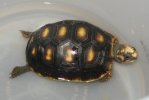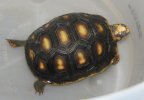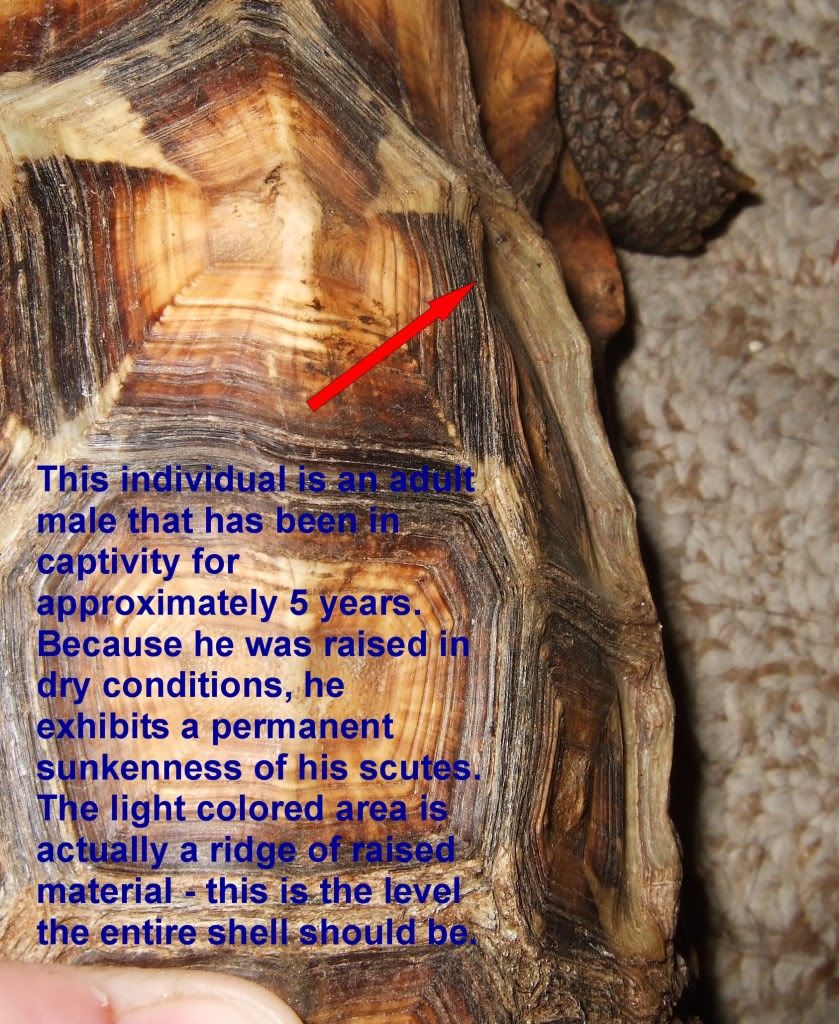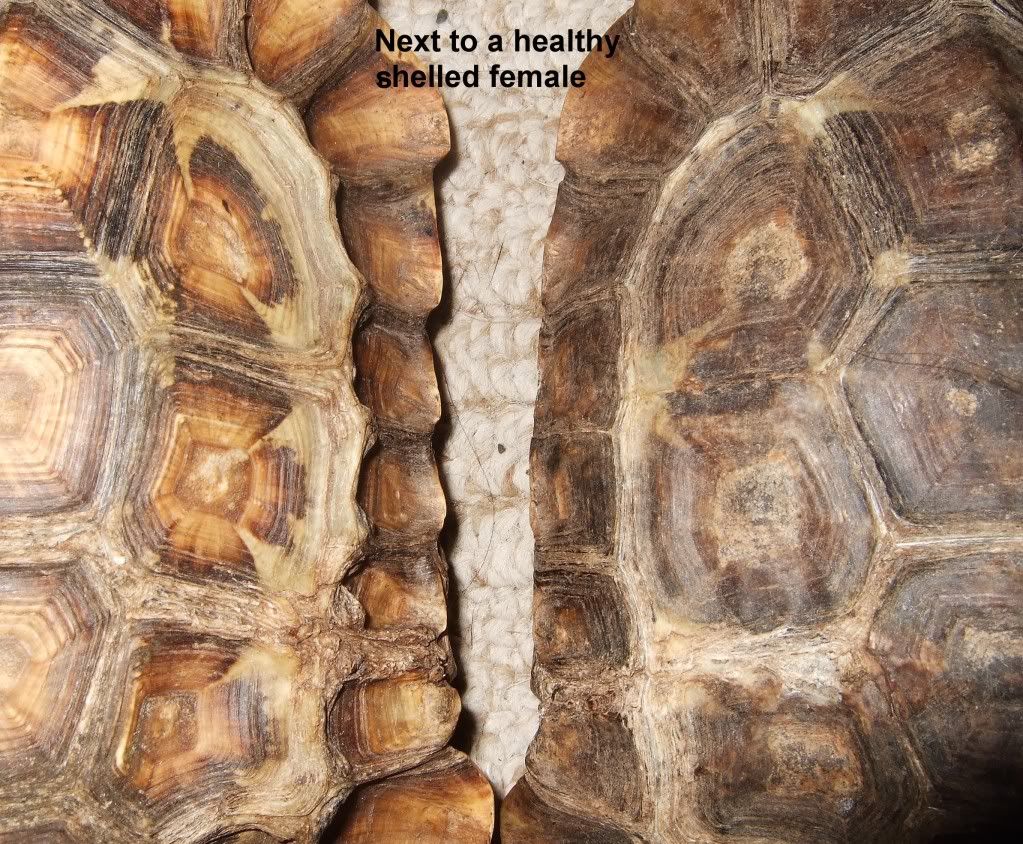How common is it for baby redfoots to have reverse pyramiding? And what exactly causes it?
Maybe I'm just being a little paranoid, but little Toby's shell doesn't look quite right. The link below is to some photos about a month ago.
http://www.tortoiseforum.org/Thread-More-pics-of-little-Toby#axzz1kI6aTJFt
I'll post some more pics from this morning here a few minutes. Any feedback would be appreciated.
--------------------
Diet: I currently implement Tortoise Library's "50/50 Diet Plan" of half commercial food and half fresh produce. Every 2 days he gets mushed Mazuri (and occasionally some other brand tortoise pellets), and every day between then, he gets spring mix (or other greens), squash, zucchini, strawberries, and/or whatever else was on sale that week.
He gets a warm bath every 2-3 days. I currently do not know what the humidity is (I know, I need a hygrometer of some sort). I mist him at least 2x daily.
CHE provides a basking spot of about 100'F. This is on 24/7. The coolest ends of the tub are 72-74'F. UV lighting is provided by a 5.0 Repti-Glo tube florescent bulb on for 12 hrs daily.
These were taken this morning.

Maybe I'm just being a little paranoid, but little Toby's shell doesn't look quite right. The link below is to some photos about a month ago.
http://www.tortoiseforum.org/Thread-More-pics-of-little-Toby#axzz1kI6aTJFt
I'll post some more pics from this morning here a few minutes. Any feedback would be appreciated.
--------------------
Diet: I currently implement Tortoise Library's "50/50 Diet Plan" of half commercial food and half fresh produce. Every 2 days he gets mushed Mazuri (and occasionally some other brand tortoise pellets), and every day between then, he gets spring mix (or other greens), squash, zucchini, strawberries, and/or whatever else was on sale that week.
He gets a warm bath every 2-3 days. I currently do not know what the humidity is (I know, I need a hygrometer of some sort). I mist him at least 2x daily.
CHE provides a basking spot of about 100'F. This is on 24/7. The coolest ends of the tub are 72-74'F. UV lighting is provided by a 5.0 Repti-Glo tube florescent bulb on for 12 hrs daily.
These were taken this morning.


Last edited by a moderator:

